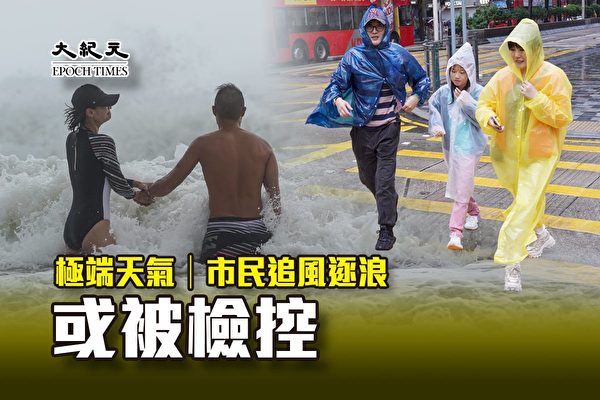Hong Kong experienced a “once-in-a-500-year” century storm on September 7th and 8th last year. Secretary for Home Affairs Patrick Nip, along with other key officials and relevant department heads, announced the government’s strengthened strategies and measures to cope with extreme weather conditions.
Nip emphasized that citizens should not engage in risky behavior such as storm chasing during typhoons and severe weather. The Leisure and Cultural Services Department will enhance public education through videos and beach broadcasts. They will also take decisive enforcement actions against those who refuse to comply with advice, including prosecution if necessary to serve as a deterrent.
During heavy rain or storms, beach closures will be announced to the public, but despite this, some individuals still go to beaches for photography or recreation. This behavior was criticized for endangering lives and hindering rescue operations, prompting calls for stricter enforcement measures.
Deputy Secretary for Security Sonny Au explained that rescue operations are carried out selflessly, but the public is urged not to put rescue personnel in danger by engaging in risky activities during severe weather conditions. Anyone who defies warnings and ventures into hazardous areas despite advisories faces high risks.
Regarding proactive patrols, Au emphasized the importance of prioritizing the safety of personnel during severe weather conditions, refraining from unnecessary risks. Even with warning signs and repeated advisories during previous typhoons, some individuals continue to disregard safety measures, drawing condemnation for disregarding their own safety and potentially putting rescuers at risk.
Currently, there are laws empowering authorities to close public areas such as beaches and country parks. Unauthorized access during closures may result in enforcement actions, including fines. For example, violating a beach closure order could lead to a fine of up to $2,000 and 14 days imprisonment, with Au asserting that penalties should not be taken lightly.
In collaboration with the Transport Department, Transport and Logistics Bureau, and MTR Corporation, it was agreed that suspending services during Typhoon Signal No. 9 or above is the safest and most reliable course of action. Trains running in outdoor sections during Signal No. 9 will make efforts to reach the original destination or a nearby station with better facilities to ensure passenger safety.
During last year’s Typhoon Kilo, bus and Airport Express services were halted, leading to long queues for taxis at the airport. Secretary Patrick Nip and Transport and Logistics Bureau Director Raymond Lam stated that contingency plans have been implemented to coordinate flight rescheduling and passenger management during approaching typhoons, ensuring efficient passenger flow at the airport.
In response to criticisms of delayed flood alerts between Hong Kong and Shenzhen during last year’s century storm, Nip assured improved coordination between water management experts to facilitate earlier flood notifications between the two regions in the future.
Regarding emergency warnings, Au explained their purpose to address sudden threats to public safety and property that cannot be predicted, such as tsunamis. Timely alerts are crucial during emergencies to guide citizens to safety measures like moving to higher ground or using floodgates.
Asked about coping with intensified heavy rain, Nip mentioned ongoing efforts to enhance response to extreme weather events by promptly addressing drainage issues and minimizing disruptions to citizens. He stressed the importance of swift action and quick recovery to reduce the impact on the public.
Development Bureau Director Eric Ning emphasized that urban flooding cannot be entirely eliminated but should focus on minimizing damages and drainage time when flooding occurs. Infrastructure improvements and resource allocation strategies are being implemented to effectively manage flood response.
Ning highlighted major rainwater drainage projects currently underway, including underground flood reservoirs and stormwater drains set to be completed between this year and 2030. Legislative proposals for seven drainage system improvement projects in areas like Wong Tai Sin and Eastern Hong Kong Island will also be submitted for approval.
Furthermore, enhanced monitoring measures such as increased coastal warning signs and advanced surveillance technology in Yuen Long and Tsim Sha Tsui are being tested to detect flooding situations in real time. Rapid response teams have been expanded to 160 teams to strengthen surveillance efforts.
A comprehensive risk assessment of one million trees located in high foot traffic areas is expected to be completed during the windy season to mitigate risks to public safety.

